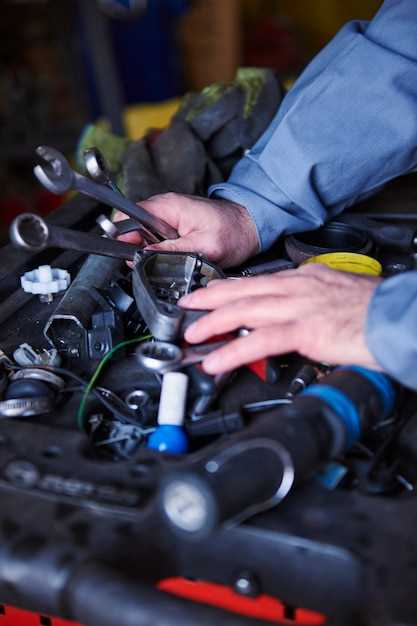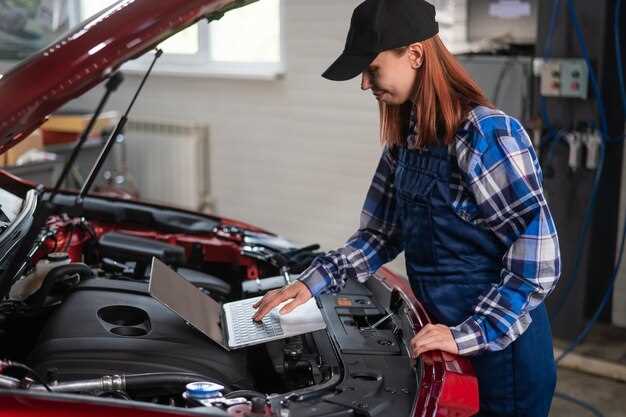
Performing a tune-up on your car’s engine is essential for maintaining optimal performance and efficiency. Whether you’re a seasoned mechanic or a weekend warrior, understanding the basics of an engine tune-up will help you keep your Charger running smoothly and reliably. In this guide, we will cover the critical components of an engine tune-up, enabling you to identify potential issues before they become major problems.
A well-executed tune-up involves checking and, if necessary, replacing various parts of your engine to ensure it operates at its best. From spark plugs to air filters, each component plays a vital role in the overall functionality of your vehicle. Understanding how these parts interact with one another is crucial for any car owner, especially those who want to maximize the life of their Charger.
In the following sections, we will provide step-by-step instructions on how to perform a basic tune-up on your Charger. This straightforward approach aims to empower you with the knowledge needed to enhance your vehicle’s performance, fuel efficiency, and overall longevity. Get ready to dive into the essential aspects of engine maintenance that will keep your Charger roaring down the road.
Step-by-Step Instructions for Replacing Spark Plugs

Replacing the spark plugs in your Charger is a vital part of maintaining engine performance. Follow these DIY steps for a successful replacement.
Step 1: Gather Necessary Tools and Materials
Before you begin, gather the tools you’ll need: a spark plug socket, a ratchet wrench, a torque wrench, a gap gauge, and new spark plugs. Make sure the new spark plugs are compatible with your engine.
Step 2: Disconnect the Battery
For safety, disconnect the negative terminal of the battery. This prevents electrical shocks and ensures no power is flowing while you work on the engine.
Step 3: Remove the Ignition Coil or Boot
To access the spark plugs, you might need to remove the ignition coil or spark plug boots. Carefully pull them off, ensuring not to damage any connectors.
Step 4: Extract Old Spark Plugs
Using the spark plug socket, unscrew the old spark plugs. Turn counterclockwise to remove them. Be cautious of any debris falling into the cylinder head.
Step 5: Check and Adjust the Gap
Before installing the new plugs, check the gap using the gap gauge. Adjust it to the manufacturer’s specifications if necessary. Proper gap ensures optimal engine performance.
Step 6: Install New Spark Plugs
Screw in the new spark plugs by hand to avoid cross-threading, then tighten them securely with the spark plug socket. Follow the manufacturer’s recommended torque specifications using a torque wrench.
Step 7: Reattach the Ignition Coil or Boot
Once the spark plugs are securely in place, reattach the ignition coils or spark plug boots. Ensure they snap into place firmly to ensure proper electrical connection.
Step 8: Reconnect the Battery
Finally, reconnect the negative terminal of the battery. Start your Charger to ensure the engine runs smoothly. Listen for any irregular sounds that may indicate a problem.
Following these steps will help you successfully replace the spark plugs in your Charger, enhancing engine performance and efficiency.
How to Adjust Fuel and Air Mixture for Optimal Performance
Adjusting the fuel and air mixture in your engine is crucial for maximizing performance and efficiency. A well-tuned mixture ensures that the engine runs smoothly, minimizes emissions, and maximizes fuel economy. This DIY guide will walk you through the steps necessary to achieve the optimal mixture for your Charger.
Start by checking your engine’s current fuel and air mixture settings. This can typically be done using an O2 sensor gauge or a scan tool compatible with your vehicle’s computer system. Refer to your owner’s manual to find the manufacturer’s recommended parameters for your specific engine model.
Once you have established a baseline, identify any symptoms of an improper mixture, such as knocking, hesitations during acceleration, or poor fuel economy. These signs suggest that adjustment is needed. To make the necessary adjustments, locate the air-fuel mixture screws or the mass airflow sensor (MAF) on the throttle body, depending on your engine type.
For carbureted engines, you can adjust the mixture screws directly. Start with the engine at operating temperature. Turn the screws in small increments clockwise and counterclockwise while monitoring the engine’s RPMs and exhaust emissions. Aim to set the mixture where the RPMs peak without increasing exhaust emissions significantly.
For fuel-injected engines, adjusting the air-fuel ratio often requires reprogramming the engine control unit (ECU) or modifying the MAF sensor. Consider using a performance chip or tuning software to reconfigure the ECU settings. This allows for fine-tuning of the air-fuel mixture, optimizing performance for specific driving conditions.
After adjustments, perform a road test to assess the changes in performance. Pay attention to throttle response, engine smoothness, and overall driving comfort. If necessary, make further adjustments until the ideal mixture is achieved.
Finally, keep in mind that regular maintenance is vital for sustaining optimal performance. Periodically check the air filter and fuel filter, as clogged components can affect the air-fuel mixture. By following these steps, you’ll ensure that your Charger’s engine is performing at its best, providing you with an exhilarating driving experience.
Checking and Replacing Engine Filters for Improved Efficiency

Regular maintenance is essential for the optimal performance of your Charger, and one of the most critical components to inspect is the engine filters. By understanding how to check and replace these filters, you can enhance the efficiency and longevity of your vehicle.
Types of Engine Filters
Your Charger is likely equipped with three primary filters: the engine air filter, cabin air filter, and fuel filter. Each plays a vital role in ensuring clean air and fuel flow to the engine, which are essential for combustion and overall performance.
Checking the Engine Air Filter
The engine air filter prevents dust, debris, and other contaminants from entering the engine. A clogged air filter can reduce airflow, leading to decreased performance and fuel efficiency. To check it, locate the filter housing, usually found near the top of the engine. Remove the filter and hold it up to a light source. If you can’t see light through it, it’s time for a replacement.
Replacing the Engine Air Filter
To replace the air filter as part of your DIY tune-up, purchase a compatible filter for your Charger. Install the new filter by reversing the removal process, ensuring it is seated correctly to avoid unfiltered air entering the engine.
Checking the Cabin Air Filter
The cabin air filter cleans the air entering the vehicle’s interior. A dirty filter can reduce air quality and strain the heating and cooling system. Typically, this filter is accessed from under the dashboard or behind the glove compartment. Check the owner’s manual for the specific location.
Replacing the Cabin Air Filter
Follow your vehicle’s manual to remove the old cabin filter. A replacement should be installed according to the direction indicated on the filter casing, typically marked by an arrow showing airflow direction.
Checking and Replacing the Fuel Filter
The fuel filter is critical for removing impurities from the fuel before it reaches the engine. A clogged fuel filter can cause performance issues and rough engine operation. Depending on your Charger model, the fuel filter location may vary; some are inline while others are integrated within the fuel pump.
To check it, inspect for signs of corrosion or leaks. If it looks dirty or you notice any performance degradation, replace the filter. Be sure to relieve fuel system pressure before removing the filter, following safety protocols for a DIY project.
Conclusion
Maintaining clean engine, cabin, and fuel filters is a straightforward yet essential part of a DIY tune-up. Regularly checking and replacing these filters can significantly improve your Charger’s efficiency, performance, and the enjoyment of your driving experience.




